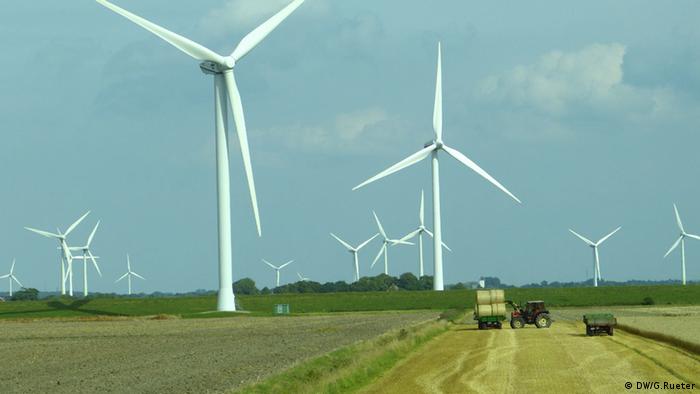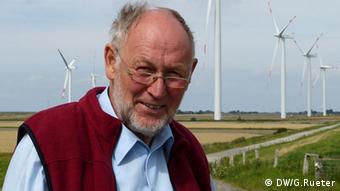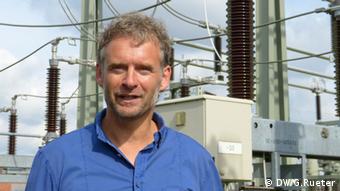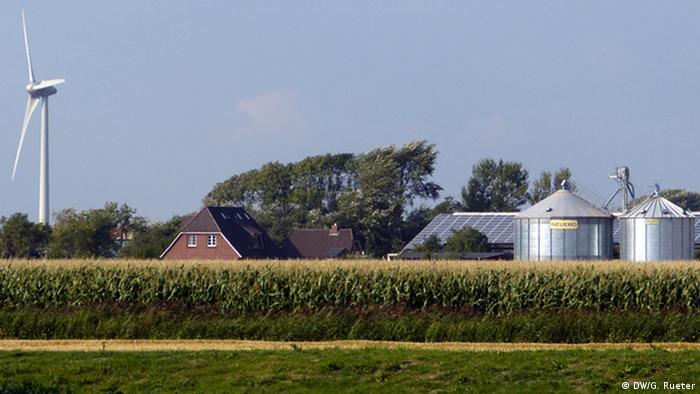More Bargain Prices for Wind Energy: This Time in Oklahoma
SustainableBusiness.com News
Public Service Company of Oklahoma is buying three times the wind energy it originally planned because of "extraordinary pricing opportunities," it says.
Buying 600 megawatts of wind energy will save the utility an estimated $53 million in the first year alone and even more after that, it says, while providing electricity for 200,000 homes.
Prices for wind energy are 50% lower than last year in Oklahoma - less than coal or natural gas.
"With these long-term power purchase agreements, we're adding a significant amount of Oklahoma wind energy, bringing more diversity to our fuel mix, and doing so at a price that will provide substantial savings for our customers," says Stuart Solomon, President.
The utility signed power purchase agreements for 200 MW of energy from three Oklahoma wind farms under development: Balko Wind Project (300 MW total); Seiling Wind Project and Goodwell Wind Project - deliveries begin by 2016.
Oklahoma's Renewable Portfolio Standard targets 15% renewable energy by 2015 and the state ranks #8 for wind generation. The University of Oklahoma and Oklahoma State University get all their electricity from wind.
Onshore wind energy prices are projected to drop another 12% by 2016, thanks to advancing technologies and lower equipment costs, says Bloomberg New Energy Finance.
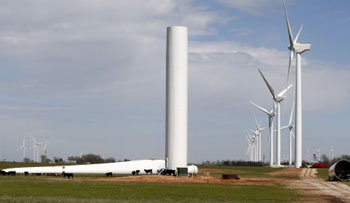
CREDIT: Sue Ogrocki, Associated Press
Meanwhile, wind energy hit a record last Thursday in Oklahoma and eight other states that make up the Southwest Power Pool. It supplied 6.45 GW of energy for several hours in the afternoon and evening - about 23% of all fuel sources.
Other recent low-priced wind energy buys include:
Buying 600 megawatts of wind energy will save the utility an estimated $53 million in the first year alone and even more after that, it says, while providing electricity for 200,000 homes.
Prices for wind energy are 50% lower than last year in Oklahoma - less than coal or natural gas.
"With these long-term power purchase agreements, we're adding a significant amount of Oklahoma wind energy, bringing more diversity to our fuel mix, and doing so at a price that will provide substantial savings for our customers," says Stuart Solomon, President.
The utility signed power purchase agreements for 200 MW of energy from three Oklahoma wind farms under development: Balko Wind Project (300 MW total); Seiling Wind Project and Goodwell Wind Project - deliveries begin by 2016.
Oklahoma's Renewable Portfolio Standard targets 15% renewable energy by 2015 and the state ranks #8 for wind generation. The University of Oklahoma and Oklahoma State University get all their electricity from wind.
Onshore wind energy prices are projected to drop another 12% by 2016, thanks to advancing technologies and lower equipment costs, says Bloomberg New Energy Finance.

CREDIT: Sue Ogrocki, Associated Press
Meanwhile, wind energy hit a record last Thursday in Oklahoma and eight other states that make up the Southwest Power Pool. It supplied 6.45 GW of energy for several hours in the afternoon and evening - about 23% of all fuel sources.
Other recent low-priced wind energy buys include:
- Austin Energy's purchase of 570 MW brings it to 35% renewables. It's paying 2.3 cents to 3.3 cents per kilowatt-hour (kWh) - less than natural gas.
- Houston's 140 MW purchase, making it the biggest municipal buyer in the US;
- Excel increased its wind portfolio by a third in the Upper Midwest, buying 600 MW. "Wind power is simply the cheapest resource available right now, and we are taking the opportunity ... to further shape our systems for the future," says Ben Fowke, CEO of Excel.
- Ohio State University bought 50 MW from the biggest wind farm in the state.
- Massachusetts' utilities are joining to buy 565 MW from projects in Maine and New Hampshire.

